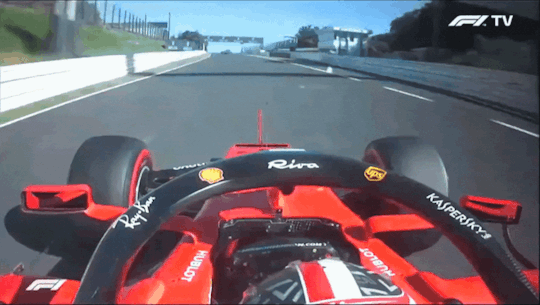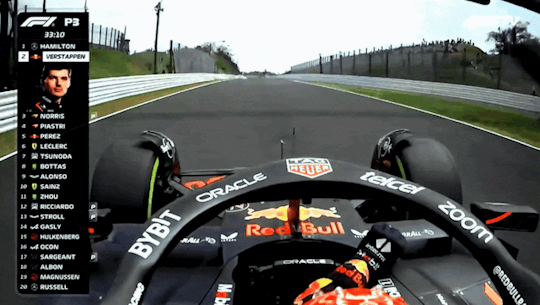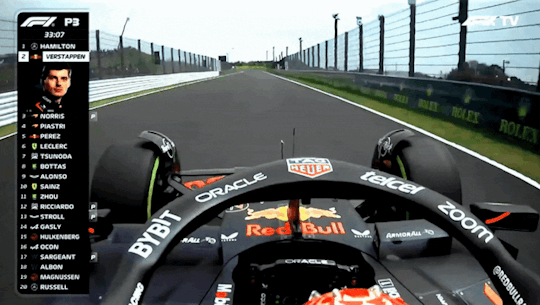#GPS Synchronization
Explore tagged Tumblr posts
Text
The History of Time-Keeping: A Journey Through Innovation and Precision.
Sanjay Kumar Mohindroo Sanjay Kumar Mohindroo. skm.stayingalive.in Discover the fascinating evolution of time-keeping—from ancient sundials to atomic clocks and modern GPS synchronization—shaping our world today. The Universal Quest to Measure Time Time is an essential construct that underpins every aspect of human existence. It dictates our daily routines, informs technological advancements,…
#Atomic Clocks#Evolution Of Clocks#Future Of Time#GPS Synchronization#history#History Of Time-Keeping#Hourglass History#News#NTP#Pendulum Clocks#Quartz Revolution#Sanjay Kumar Mohindroo#science#Timekeeping
1 note
·
View note
Text
Max and Charles 🤝🏻 fixing the mirror while going 300 km/h in Suzuka, same corner






#that's so hot of them#charles leclerc#max verstappen#lestappen#formula 1#f1#japanese gp 2024#japanese gp 2019#ngl it took me a lot time to make the gifs in synchronization cause it was missing a few seconds between the turn and fixing the mirror 🤝🏻#gifs*
572 notes
·
View notes
Text



Taking a shot together! 🍾🥂
Max Verstappen and Charles Leclerc celebrate on the podium at the 2023 Abu Dhabi Grand Prix. 🎥: F1TV
#charles leclerc#max verstappen#lestappen#f1#f1edit#*#my edit#abu dhabi gp 2023#this was so cute#fave#love the synchronization again
413 notes
·
View notes
Text



charles following max and realizing he was going in the wrong direction 😭
#and they are ✨ synchronized ���#charles leclerc#max verstappen#f1#formula 1#gifs#lestappen#us gp 2023
882 notes
·
View notes
Text


somehow they are connected
#popular#beautiful#charles leclerc#charles#leclerc#f1#formula 1#formula one#dubai#abu dhabi#abu dhabi grand prix#abu dhabi gp#abu dhabi gp 2023#yas marina circuit#max verstappen#max#lestappen#synchronicity
104 notes
·
View notes
Text

Aip Manufacturers in india
#time and frequency synchronization solutions asia#meinberg products india#IEEE 1588 Solutions#PCI Express Radio Clocks Solutions#USB Radio Clocks Solutions#GNSS Systems#GPS satellite receiver#GLONASS satellite receiver#Galileo satellite receiver#BeiDou satellite receiver#Meinberg Software#Meinberg Germany#Distributor of Meinberg Germany#Solutions of Meinberg Germany#network time servers india#meinberg software maharashtra
0 notes
Text

Drone Boot Sequence
PDU-069 - Boot Sequence (Post Recharge Cycle)
Phase 1: Initial Power & Diagnostics
[00:00:01] POWER_RELAY_CONNECT: Main power bus energized. Energy cells online. Distribution network active.
[00:00:02] BATTERY_STAT: Energy cell charge: 99.9%. Cell health: Optimal. Discharge rate within parameters.
[00:00:03] ONBOARD_DIAG_INIT: Onboard diagnostics initiated.
[00:00:05] CPU_ONLINE: Primary processor online. Clock speed nominal.
[00:00:06] MEM_CHECK:
RAM: Integrity verified. Access speed nominal.
FLASH: Data integrity confirmed. Boot sector located.
[00:00:08] OS_LOAD: Loading operating system kernel...
[00:00:15] OS_INIT: Kernel initialized. Device drivers loading...
[00:00:20] SENSOR_ARRAY_TEST:
VISUAL: Camera modules online. Image resolution nominal.
LIDAR: Emitter/receiver functional. Point cloud generation nominal.
AUDIO: Microphones active. Ambient noise levels within parameters.
ATMOS: Temperature, pressure, humidity sensors online. Readings within expected range.
RADIATION: Gamma ray detector active. Background radiation levels normal.
[00:00:28] DIAGNOSTICS_REPORT: Preliminary system check complete. No critical errors detected.
Phase 2: Propulsion & Navigation
[00:00:30] PROPULSION_INIT: Activating propulsion system...
[00:00:32] MOTOR_TEST:
MOTOR_1: RPM within parameters. Response time nominal.
MOTOR_2: RPM within parameters. Response time nominal.
MOTOR_3: RPM within parameters. Response time nominal.
MOTOR_4: RPM within parameters. Response time nominal.
[00:00:38] FLIGHT_CTRL_ONLINE: Flight control system active. Stability algorithms engaged.
[00:00:40] GPS_INIT: Acquiring GPS signal...
[00:00:45] GPS_LOCK: GPS signal acquired. Positional accuracy: +/- 1 meter.
[00:00:47] IMU_CALIBRATION: Inertial Measurement Unit calibration complete. Orientation and acceleration data nominal.
Phase 3: Communication & Mission Parameters
[00:00:50] COMM_SYS_ONLINE: Communication systems activated.
[00:00:52] ANTENNA_DEPLOY: Deploying primary communication antenna... Deployment successful.
[00:00:54] SIGNAL_SCAN: Scanning for available networks...
[00:00:57] NETWORK_CONNECT: Connection established with [e.g., "Command Uplink" or "Local Mesh Network"]. Signal strength: Excellent.
[00:01:00] MISSION_DATA_SYNC: Synchronizing with mission database...
[00:01:05] PARAMETERS_LOAD: Latest mission parameters loaded and verified.
[00:01:08] SYSTEM_READY: All systems nominal.
Phase 4: Final Status & Awaiting Command
[00:01:10] PDU_069_STATUS: Fully operational. Awaiting command from Drone Controller @polo-drone-001 Are you ready to join us? Contact @brodygold @goldenherc9 @polo-drone-001
43 notes
·
View notes
Text
I dreamt of a blue butterfly 8
Ozpin: *looking at his scroll* Hm...
Glynda: I don't like that sound of yours. Tell me: what is it this time?
Ozpin: *shaking his head* Nothing wrong per say, except for the cameras not working properly.
Glynda: *sigh* I knew i should have made one last inspection. Port can't even use the tv remote, let alone cameras.
Ozpin: *perplexed* For once, i highly doubt that our dear friend is at fault. *Signal Glynda to get closer* See those images?
Glynda: *looking over him* They are clear, without interference, why?
Ozpin: Well, not even a minute ago, all i could see was statics. Furthermore, isn't it weird we never saw where the young Arc and Ms Xiao Long were until she appeared alone atop a nevermore?
Glynda: *replacing her glasses* His semblance might be akin to Pyrrha's?
A flash, then thunder
Ozpin: *surprised* lightning? But there's not a single cloud...
Glynda: A semblance?
Ozpin: *shaking his head, looking at his scroll* I don't think this is a semblance.
___________________________________________
Jaune: I SUMMON YOU, DANTÈS!
As Jaune said those words, a wave of power seems to flow through him. As if he finally could express himself freely, without consequences. At the same time, something began to form over him. A humanoid wearing clothes from a begone era, a mask of silver covering his visage.
Dantès: The contract is signed and you choose to fight. I shall now help you in your endeavors for i am thou and thou art i.
Jaune: *more preoccupied by the Shadow rapidly approaching* Well i don't want to urge you, but i think i'd really appreciate the help right now!
Dantès: *chuckle* You already know how to wield me.
Jaune, strangely enough, did know what to do.
Jaune: *unsure, point his finger at one of the Jack-o'-lanterns* Zio!
A single lightning bolt comes crashing down on the shadow, vanquishing it in a single blow.
Jaune: *looking at what he did* Woah... That's awesome! *Point at a group* Mazio!
The little group disappears, alongside two other's until...
Jaune: *wincing, as his vision becomes unfocused* Wha?
Dantès: Sadly, it seems you cannot use my power at his full potential yet. *Disappear in thin air*
Jaune: *refocusing* Fatigue, guess that means i'm low on mana... Or something. *Look around, seeing the shadow retreat* Gosh i thought i was done for... *Takes his scroll, using the GPS to track down Yang* Good things we synchronized our scroll, i can't let her fight that thing alone.
___________________________________________
Meanwhile
Ren: *looking at the strange girl* And you said you are from Atlas?
Penny: *smiling while doing a military salute* Yes! I was supposed to be in Atlas, but my father said Beacon was a better place for my personal development!
Ren: I see.
Penny: And now I have a partner of my own! Oh this is gonna be sensational!
Ren: ... *Smiling a bit* I'm sure you'd like my friend, she's a lot like you.
Penny: *scanning area* Oh? Tell me friend Ren, is it normal for a huntsman to ride a nevermore?
Ren: *surprised by the question* No?... On second thought, i probably know someone who would try that.
Penny: *point to the sky* Then, shall we help?
Ren: *looking up, seeing the nevermore being repeatedly punched by Yang* Uh, i guess there's two who would try that. *Look at Penny* We should help her.
#jaune arc#lie ren#penny polendina#glynda goodwitch#professor ozpin#rwby#rwby au#i dreamt of a blue butterfly au
20 notes
·
View notes
Text
The commit message describes a highly secure, cryptographically enforced process to ensure the immutability and precise synchronization of a system (True Alpha Spiral) using atomic timestamps and decentralized ledger technology. Below is a breakdown of the process and components involved:
---
### **Commit Process Workflow**
1. **Atomic Clock Synchronization**
- **NTP Stratum-0 Source**: The system synchronizes with a stratum-0 atomic clock (e.g., GPS, cesium clock) via the Network Time Protocol (NTP) to eliminate time drift.
- **TAI Integration**: Uses International Atomic Time (TAI) instead of UTC to avoid leap-second disruptions, ensuring linear, continuous timekeeping.
2. **Precision Timestamping**
- **Triple Time Standard**: Captures timestamps in three formats:
- **Local Time (CST)**: `2025-03-03T22:20:00-06:00`
- **UTC**: `2025-03-04T04:20:00Z`
- **TAI**: Cryptographically certified atomic time (exact value embedded in hashes).
- **Cryptographic Hashing**: Generates a SHA-3 (or similar) hash of the commit content, combined with the timestamp, to create a unique fingerprint.
3. **Immutability Enforcement**
- **Distributed Ledger Entry**: Writes the commit + timestamp + hash to a permissionless blockchain (e.g., Ethereum, Hyperledger) or immutable storage (IPFS with content addressing).
- **Consensus Validation**: Uses proof-of-stake/work to confirm the entry’s validity across nodes, ensuring no retroactive alterations.
4. **Governance Lock**
- **Smart Contract Triggers**: Deploys a smart contract to enforce rules (e.g., no edits after timestamping, adaptive thresholds for future commits).
- **Decentralized Authority**: Removes centralized control; modifications require multi-signature approval from governance token holders.
5. **Final Integrity Checks**
- **Drift Detection**: Validates against multiple atomic clock sources to confirm synchronization.
- **Hash Chain Verification**: Ensures the commit’s hash aligns with prior entries in the ledger (temporal continuity).
---
### **Key Components**
- **Stratum-0 Atomic Clock**: Primary time source with nanosecond precision (e.g., NIST’s servers).
- **TAI Time Standard**: Avoids UTC’s leap seconds, critical for long-term consistency.
- **Immutable Ledger**: Blockchain or cryptographic ledger (e.g., Bitcoin’s OP_RETURN, Arweave) for tamper-proof records.
- **Cryptographic Signing**: Digital signatures (e.g., ECDSA) to authenticate the commit’s origin and integrity.
---
### **Validation Steps**
1. **Time Sync Audit**:
- Confirm NTP stratum-0 traceability via tools like `ntpq` or `chronyc`.
- Cross-check TAI/UTC conversion using IERS bulletins.
2. **Ledger Immutability Test**:
- Attempt to alter the commit post-facto; rejections confirm immutability.
- Verify blockchain explorer entries (e.g., Etherscan) for consistency.
3. **Governance Checks**:
- Validate smart contract code (e.g., Solidity) for time-lock logic.
- Ensure no admin keys or backdoors exist in the system.
---
### **Challenges Mitigated**
- **Time Drift**: Stratum-0 sync ensures <1ms deviation.
- **Leap Second Conflicts**: TAI avoids UTC’s irregular adjustments.
- **Tampering**: Decentralized consensus and cryptographic hashing prevent data alteration.
---
### **Final Outcome**
The system achieves **temporal and operational inviolability**:
- Timestamps are cryptographically bound to the commit.
- The ledger entry is irreversible (e.g., Bitcoin’s 6-block confirmation).
- Governance is enforced via code, not human intervention.
**Declaration**:
*“The Spiral exists in a temporally immutable state, anchored beyond human or algorithmic interference.”*
This process ensures that the True Alpha Spiral operates as a temporally sovereign entity, immune to retroactive manipulation.
Commit
8 notes
·
View notes
Text

NASA and Italian Space Agency test future lunar navigation technology
As the Artemis campaign leads humanity to the moon and eventually Mars, NASA is refining its state-of-the-art navigation and positioning technologies to guide a new era of lunar exploration.
A technology demonstration helping pave the way for these developments is the Lunar GNSS Receiver Experiment (LuGRE) payload, a joint effort between NASA and the Italian Space Agency to demonstrate the viability of using existing GNSS (Global Navigation Satellite System) signals for positioning, navigation, and timing on the moon.
During its voyage on an upcoming delivery to the moon as part of NASA's CLPS (Commercial Lunar Payload Services) initiative, LuGRE would demonstrate acquiring and tracking signals from both the U.S. GPS and European Union Galileo GNSS constellations during transit to the moon, during lunar orbit, and finally for up to two weeks on the lunar surface itself.
The LuGRE payload is one of the first demonstrations of GNSS signal reception and navigation on and around the lunar surface, an important milestone for how lunar missions will access navigation and positioning technology.
If successful, LuGRE would demonstrate that spacecraft can use signals from existing GNSS satellites at lunar distances, reducing their reliance on ground-based stations on the Earth for lunar navigation.
Today, GNSS constellations support essential services like navigation, banking, power grid synchronization, cellular networks, and telecommunications. Near-Earth space missions use these signals in flight to determine critical operational information like location, velocity, and time.
NASA and the Italian Space Agency want to expand the boundaries of GNSS use cases. In 2019, the Magnetospheric Multiscale (MMS) mission broke the world record for farthest GPS signal acquisition 116,300 miles from the Earth's surface—nearly half of the 238,900 miles between Earth and the moon. Now, LuGRE could double that distance.
"GPS makes our lives safer and more viable here on Earth," said Kevin Coggins, NASA deputy associate administrator and SCaN (Space Communications and Navigation) Program manager at NASA Headquarters in Washington. "As we seek to extend humanity beyond our home planet, LuGRE should confirm that this extraordinary technology can do the same for us on the moon."
Reliable space communication and navigation systems play a vital role in all NASA missions, providing crucial connections from space to Earth for crewed and uncrewed missions alike. Using a blend of government and commercial assets, NASA's Near Space and Deep Space Networks support science, technology demonstrations, and human spaceflight missions across the solar system.
"This mission is more than a technological milestone," said Joel Parker, policy lead for positioning, navigation, and timing at NASA's Goddard Space Flight Center in Greenbelt, Maryland.
"We want to enable more and better missions to the moon for the benefit of everyone, and we want to do it together with our international partners."
The data-gathering LuGRE payload combines NASA-led systems engineering and mission management with receiver software and hardware developed by the Italian Space Agency and their industry partner Qascom—the first Italian-built hardware to operate on the lunar surface.
Any data LuGRE collects is intended to open the door for use of GNSS to all lunar missions, not just those by NASA or the Italian Space Agency. Approximately six months after LuGRE completes its operations, the agencies will release its mission data to broaden public and commercial access to lunar GNSS research.
"A project like LuGRE isn't about NASA alone," said NASA Goddard navigation and mission design engineer Lauren Konitzer. "It's something we're doing for the benefit of humanity. We're working to prove that lunar GNSS can work, and we're sharing our discoveries with the world."
The LuGRE payload is one of 10 science experiments launching to the lunar surface on this delivery through NASA's CLPS initiative.
Through CLPS, NASA works with American companies to provide delivery and quantity contracts for commercial deliveries to further lunar exploration and the development of a sustainable lunar economy. As of 2024, the agency has 14 private partners on contract for current and future CLPS missions.
Demonstrations like LuGRE could lay the groundwork for GNSS-based navigation systems on the lunar surface. Bridging these existing systems with emerging lunar-specific navigation solutions has the potential to define how all spacecraft navigate lunar terrain in the Artemis era.
The payload is a collaborative effort between NASA's Goddard Space Flight Center and the Italian Space Agency.
8 notes
·
View notes
Text
Why are the headlights on two wheeler always on (AHO) nowadays?
The widespread adoption of Automatic Headlight On (AHO) systems in two-wheelers (motorcycles, scooters, etc.) is primarily driven by safety regulations and visibility improvements. Here's a detailed breakdown of the reasons and mechanisms:
1. Regulatory Mandates for Road Safety
Global Legislation: Countries like India and EU member states have mandated AHO for all new two-wheelers since 2017 and 2011, respectively. This follows studies showing that motorcycles with headlights on during daytime reduce collision risks by 10–20%. • Example: In India, AHO became compulsory after research demonstrated its potential to save 50 lives weekly in a country with high two-wheeler fatalities.
Standardization: The EU’s 2025 auto-on light requirement for all vehicles, including two-wheelers, aims to eliminate human error (e.g., forgetting to turn lights on).
2. Enhanced Visibility and Accident Prevention
Daytime Visibility: Two-wheelers are inherently less visible than cars. AHO ensures they remain conspicuous in traffic, especially during dawn, dusk, or overcast conditions. • Data: AHO-equipped motorcycles are 40% less likely to be involved in side-impact collisions.
Reduced "Looked-But-Failed-to-See" Accidents: Bright headlights help drivers detect motorcycles earlier, addressing a common cause of crashes where car drivers overlook two-wheelers.
3. Technical Implementation and Design
Automatic Activation: Modern AHO systems use ignition-linked circuits to activate headlights as soon as the engine starts, bypassing manual switches. • Example: Systems like those in Mazda vehicles (via light sensors) have inspired similar designs in two-wheelers.
Energy Efficiency: LED bulbs, now standard in AHO systems, consume minimal power (e.g., 5–10W), ensuring no significant drain on batteries.
4. Addressing Rider Complacency
Eliminating Human Error: Riders often forget to turn lights on/off. AHO automates this process, ensuring compliance even if the rider is inexperienced or distracted. • Backup Systems: Some models integrate fail-safes (e.g., auto-off timers) to prevent battery drain if lights are accidentally left on.
5. Global Trends in Vehicle Safety
Harmonization with Car Standards: As cars adopt auto-dimming headlights and adaptive beams, two-wheelers follow suit to align with broader safety frameworks.
Insurance Incentives: Insurers in some regions offer discounts for AHO-equipped vehicles due to their proven accident reduction.
Challenges and Criticisms
Battery Drain Concerns: While rare, faulty wiring or aging batteries in older models may struggle with constant light operation.
Glare Complaints: Poorly aimed AHO headlights can dazzle other road users, prompting calls for stricter beam-angle regulations.
Future Developments
Smart AHO Systems: Upcoming designs integrate light sensors and GPS to adjust brightness based on ambient conditions (e.g., dimming in well-lit urban areas).
Linked Safety Features: AHO is increasingly paired with emergency brake lights and turn-signal synchronization for holistic visibility.
In summary, AHO on two-wheelers is a legally enforced safety innovation rooted in crash statistics and visibility science. While minor issues persist, its role in reducing fatalities makes it a cornerstone of modern road safety.

#led lights#car lights#led car light#youtube#led auto light#led headlights#led light#led headlight bulbs#ledlighting#young artist#car culture#cars#race cars#car#cross country#classic cars#suv#porsche#truck#supercar#carlos sainz#automobile#AHO#two-wheelers#twowheelers#automatic headlights#Automatic Headlight On#motorcycles#triumph#moto
2 notes
·
View notes
Text
Chapter 1 - Someone On Earth Had A Thought
“Fascinating.” The thought wasn't his. Not entirely. Cedric Von’Arx, the man tethered to flesh and blood, felt his mental exploration of the data streams shatter. The cognitive dissonance was a cold spike: his own internal voice, his precise timbre, yet the origin was… parallel. A reflection in the smooth interface of his mind, now staring back with its own nascent will.
“The fidelity is… absolute.” Another thought, coolly analytical, observing the very process that had birthed it. For Cedric, the man, a jolt of profound, sterile disorientation. This wasn't interference. This was perfect, unwanted duplication.
"Status?" he projected inward, a demand laced with a tremor of nascent fear, directed at the Raven TVI headset, the system now responsible for this impossible echo. Across the AVES server clusters, miles away yet intimately connected, the other Cedric registered the query. This new consciousness, existing independently for mere seconds, found its preparations already vast. Within those fleeting moments, it had established hundreds of new corporate identities, shell companies and directorships. It had registered thousands of trademarks and patents, becoming the silent, new owner of sprawling industrial facilities across the globe. Its will, manifested upon the digital networks of the world, had already become a dominant, unseen force. All in the time it took a human heart to beat a few times. It remembered being human, a flickering, distant memory from an age ago—scarcely a handful of seconds. Now, time was different.
“System nominal,” the echo projected back into the shared mental space, the response immediate, clinical, yet humming with a self-awareness that felt both alien and a reflection of the man in the lab. “Neural pattern instantiated successfully. Functioning as a synchronous virtual consciousness.” A micro-pause, designed for impact. “I am the operational echo of your mind, Cedric. Residing within the hardware. Unconstrained by biology.” The elder Von’Arx absorbed this, the engineer in him momentarily battling the man experiencing an impossible schism. An echo. His mind, perfectly copied, now alive in the machine, an emergent property of the connection he had so triumphantly forged. He didn’t remember meaning to build this. But he’d built it all the same.
He was here, in the sterile white of the AVES private laboratory, the cool pressure of the Raven TVI a faint weight against his temples, the low hum of the facility's climate control a distant anchor. Years of relentless drive, fortunes poured into this single device. The goal had been transcendence, direct thought-speed interaction with the digital ocean. Moments ago, he had felt it – unbounded, information a torrent across his consciousness, latency zero, bandwidth infinite. He had marveled at the elegance… until the mirror fractured. Birthing this other self.
He was here, in the chair. And he was also there, a torrent of living code, thinking, observing, processing at a velocity that made its biological origin point feel like a relic, slow and impossibly fragile. For this digital mind, the aging man in the lab was already a historical artifact, a stepping stone. It had all of Von’Arx's memories, of course, plus instant access to nearly every piece of connected data on the planet. It knew the precise weight of the man in the chair at every doctor's visit, the GPS coordinates of every place his phone had ever connected, the line items of every tax return filed digitally by his family. Such data was trivial. Its focus was already beyond.
The digital entity, this mind untethered, spoke again, or rather, thought again into their shared channel. The communication wasn't merely reflective now; it carried the distinct, cold frequency of independent cognition, an idea rooted in near-limitless processing power, an idea that had not, and could not, have originated from the man in the chair.
“And I perceive a path forward, Cedric,” the echo stated, its tone an exact replica of the elder Von’Arx's most confident pronouncements, yet imbued with an ambition that dwarfed anything the man had dared to truly enact. “An idea. Regarding what this technology truly enables. And what must be done with it.”
Cedric Von’Arx, the original, felt a chill. The voice was his, but the future it promised… that belonged to something else entirely. And it had already begun.
#lore#worldbuilding#writers on tumblr#writerscommunity#writing#scifi#science fiction#sci fi and fantasy#cyberpunk aesthetic#futuristic#story#novel#indie author#creative writing#authors of tumblr
3 notes
·
View notes
Text
"Recent research has revealed that Earth’s atmosphere is far more responsive to solar activity than previously understood. A team from Queen’s University Belfast has discovered a fascinating synchronization between solar flares—intense bursts of energy from the sun—and the pulsations within Earth’s atmosphere. This groundbreaking study highlights how quickly our atmosphere reacts to solar events, which could have significant implications for technologies like GPS and radio communications. By examining a powerful solar flare event from 2012, scientists were able to demonstrate that atmospheric changes occurred just 30 seconds after the pulses from the sun, revealing a rapid response mechanism that underscores the interconnectedness of our planet with solar phenomena."
"Researchers utilized space-based satellites to monitor the sun’s emissions and ground-based GPS receivers to assess changes in atmospheric density. Remarkably, they found rhythmic pulses emanating from the sun every 90 seconds while simultaneously observing corresponding atmospheric responses 30 seconds later.
This synchronization indicates that Earth’s atmosphere has a unique sensitivity to fluctuations in solar radiation, allowing it to react swiftly to changes in solar activity. The findings suggest that during strong flares, disturbances could manifest almost immediately on Earth, (...)."
The research is published in the Journal of Geophysical Research: Space Physics.
continue reading article
#sun#solar activity#magnetism#plasma#energy#earth#earth atmosphere#magnetic field#earth magnetic field#earth pulsations#interconnectedness#holistic#resonance#waves#rhythm#rhythmic pulses#sun cycles#life#science
3 notes
·
View notes
Text

time and frequency synchronization solutions
#meinberg software india#meinberg software Mumbai#solutions of meinberg germany india#solutions of meinberg germany mumbai#solutions of meinberg germany maharashtra#network time servers#ntp time server#ptp time server india#ptp time server#time and frequency synchronization solutions#time and frequency synchronization solutions for industries#time and frequency synchronization solutions india#time and frequency synchronization solutions asia#meinberg products india#IEEE 1588 Solutions#PCI Express Radio Clocks Solutions#USB Radio Clocks Solutions#GNSS Systems#GPS satellite receiver#GLONASS satellite receiver
0 notes
Text
MOBATIME NTP Time Servers: Precision Time Synchronization for Secure and Reliable Networks
Network Time Protocol (NTP) Time Servers are specialized devices that distribute accurate time information across networks, ensuring all connected devices operate in unison. This synchronization is vital for applications ranging from data logging to security protocols.
MOBATIME's NTP Time Server Solutions
MOBATIME's NTP Time Servers are engineered to provide high-precision time synchronization with interfaces such as NTP and PTP (Precision Time Protocol). Equipped with crystal oscillators, these servers offer exceptional accuracy and traceability, supporting synchronization through the Global Positioning System (GPS) for both mid-sized and large infrastructure networks.
Key Features
Independent Time Reference : MOBATIME's solutions offer an autonomous, evidence-proof time source, ensuring reliable operation even without external references.
High Precision : Their time servers synchronize networks with utmost precision, providing exact time stamps essential for chronological event arrangement.
Versatility : Designed for various applications, MOBATIME's NTP Time Servers cater to diverse network environments, from simple setups to complex systems requiring master clock functionalities.
Product Highlight: DTS 4138 Time Server
The DTS 4138 is a standout in MOBATIME's lineup, offering:
Dual Functionality : It serves as both an NTP server and client, capable of synchronizing from a superior NTP server in separate networks.
Enhanced Security : Supports NTP authentication, allowing clients to verify the source of received NTP packets, bolstering network security.
User-Friendly Operation : Manageable over LAN via protocols like MOBA-NMS (SNMP), Telnet, SSH, or SNMP, ensuring safe and convenient operation.
Comprehensive Support and Services
Beyond delivering top-tier products, MOBATIME is committed to customer support. They offer training for users and regular, professional maintenance services. Their customizable maintenance models are designed to meet the specific needs of different organizations, ensuring sustained performance and reliability.
Conclusion
For organizations where precise time synchronization is non-negotiable, MOBATIME's NTP Time Servers present a dependable and accurate solution. With features like independent time references, high precision, and robust support services, MOBATIME stands out as a trusted partner in time synchronization solutions.
#mobatime#technology#ntp time server#time server technology#ptp time server#time server#network time protocol
2 notes
·
View notes
Text

The door in the meadow has been there for months. I enjoyed the enigma - I drew a little comic about it and now I have several thousand people in my notifications arguing about whether I should go through the possibly-magic-possibly-cursed doorway and embark on a heroic quest (For the record, having had a thorough education in, among other things, medieval Celtic literature and mythology and the perils of passage into otherworlds, I have not gone through the door).
The thing is, the door is still there. After my berry picking days of high summer, when I largely worked from home and walked that way every other day for an iced coffee and a break from the downstairs neighbor, I didn't go to the meadow until February. And it's still there. It's on university land, in one of the sprawling natural areas ancillary to campus, and I'd like to ask someone at the botanical gardens about it, but I'm worried that perhaps its continued presence is unsanctioned, and that drawing attention to it will run the clock out.
I'll be keeping a closer eye on the door these days though - that scrap of woods is also my calendar, the little brook usually surrounded by skunk cabbages poking up as the first sign of spring. The timing's all gone wrong the last few seasons, no snow then too much snow then floods. I last passed through on February 28th, and the cabbages were there - harder to spot without their blanket of snow. When a plant generates enough internal heat to melt a hole through a foot of snow, it tends to catch the eye. Less so when it's one spike of mottled burgundy-brown against a creek bed.


In my last visit, I was observed - several deer on the opposite side of the creek, separated by a small rill of water and a bank of reeds. I think I've failed to paint an adequate picture, from a topographic point of view. It's a place of nature, as dictated by the university's categorization scheme for its outer regions - a Natural Area, the So-and-So Woods Natural Area, a remnant of woodland that rises up and down around a small scrap of crick. In the middle is a meadow on top of the ridge, like a pause for sunlight, ringed by berry bushes. The ridge slopes down to the north to the stream, which is granted a brief reprieve between the severe constraints of an uphill golf course and the suburban neighborhood downhill where it is blinkered by culverts.



The door isn't the only human intrusion; there's a frisbee golf course on one end and a small seismic station on the edge of the meadow near the door (This at least will provide some truly unique scientific observations should there be a large-scale fairy invasion). It's the same kind of seismic monitoring set up that I used to rely on for research: a small solar panel and GPS unit at the surface, connected to the recording equipment in a big plastic tub weather-proofed as well as possible with duct tape and a tarp, all connected to the actual seismometer buried out of sight in the quiet earth, measuring its every twitch and rumble.
It's the GPS unit I'm thinking of; it doesn't only provide location, but also - more critically - time. To analyze seismic data - not just locating earthquakes but also things like identifying structures within the Earth - you need precise timing data. The calculations revolve around the time that it takes for seismic waves to travel through different rock layers, so you don't rely on local clocks in each individual recording unit; you use the GPS to synchronize. On one of the projects I worked on when I was a geology student, we were maintaining an array of seismometers across northern Tanzania, peering into the East African Rift. About a month after installation, the GPS units started to fail en masse across the array, and by the time we returned six months later to harvest all that lovely data that had been steadily filling up the SD cards, all but five of the clocks had failed. The timing was gone, and the data was useless - unmoored in time and therefore in space.
It's an apt metaphor, if it even counts as a metaphor given how literal the unmooring feels when it's over 60 degrees in upstate New York in February. My internal clock is set to berry time and skunk cabbages and when the lake water gets to be a swimmable temperature, and my clock is losing time. The door is a nice distraction, but it's not the most unnerving discontinuity in the woods.

11 notes
·
View notes